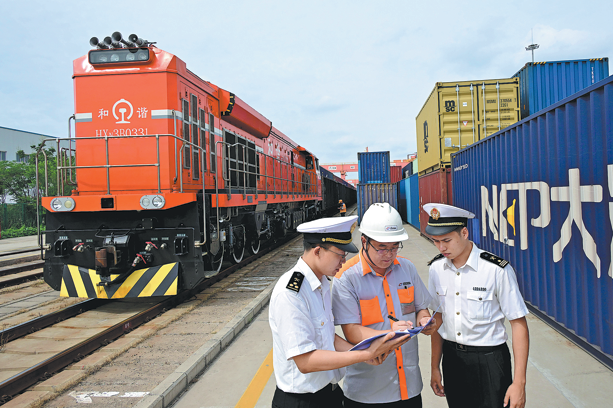Inevitable slowdown can end well

China's economy is facing tough times, but the government is on the right track with its reform package
With the announcement of the tapering off of quantitative easing by the US Federal Reserve in 2013, emerging markets started feeling the chill. The currency and stock market have suffered losses of 30 percent in some countries, in conjunction with drastic capital flows out of emerging markets and back into safer assets such as US Treasury bonds.
China was no exception in this process. Even with its regulations on domestic interest rates, the RMB currency rate and capital flow, China has shown some signs of slowing down. The rate of growth has come down to some of its slowest in the past decade, the purchasing managers index has been hovering around the critical point between expansion and contraction, and even the once sizzling real estate market seems to have started sputtering in some second and third-tier cities.
Such slowing down of the Chinese economy has attracted considerable international attention. Once again, some voiced their concerns about the sustainability of the economy and questioned whether China can continue its miraculous economic growth over the next decade.
Michael Pettis's book Avoiding the Fall: China's Economic Restructuring summarizes such views and predicts that China's growth could collapse within three years unless its economic model is reformed.
Pettis argues that debt has reached unsustainable levels and that the country's investment-led model has to be replaced by one in which consumption plays a bigger role. He believes the government can make the reforms but that if it does everyone will have to get used to GDP growth of 4 to 5 percent over the next 10 years. Given this paradox between the speed and quality of economic growth, Pettis seems rather pessimistic about China's future.
Granted, the Chinese economy is going through a period of challenging reform and many problems surface during such a process. With increasing labor costs, appreciation of the yuan and dwindling international demand, exports, the traditional driving force of Chinese economic growth, inevitably slows down. To make up the void left by slowing exports, over the past decade China has been considerably increasing its investment, especially investment related to infrastructure construction and state-owned enterprises.
Such investments have proved effective in boosting economic growth in the short term, especially during the 2008-09 global financial crisis. However, given the low financial returns and disappointing efficiency of such investments, lately the economy has started feeling the aftermath of such stimulus packages.
According to many reports, new cities with few people living in them sprang up in many parts of the country; investments in certain areas already troubled by overcapacity, such as steel, concrete and solar panels kept increasing; and more people switched from their traditional business and put their money into speculative areas such as real estate and so-called shadow banking.
Investment and stimulus indeed did have some positive effects in averting an economic crisis in the short term. However, many policymakers and academics agree that such short-term measures run the risk of modifying the long-term expectations of businesspeople and households. Because plant owners and wealthy individuals all expected greater investment down the road, they kept pouring their money into non-sustainable risky investment projects in the hope that the next stimulus round would rationalize their increasingly reckless investments.
However, as things stand now, some of the trust company schemes related to real estate and industrial overcapacity have started defaulting. At the same time, more investors have started worrying about the financial soundness of many local governments, many of which finance their high-speed growth with trust company plans. Without the financing that backs their investments, real economic growth in many areas may drop quite significantly.
Of course, the biggest concern with a slowing economy is employment, which is why the Chinese government has been striving to keep annual growth at 8 percent and trying to replace the investment-led growth model with the more sustainable consumption-driven model.
It is worth pointing out that such a change in the growth model requires time, and a change of expectations by all participants in the economy. As a result, a gradual slowdown of economic growth may prove to be not only instrumental but also necessary. As to how low a slowdown the government should tolerate is indeed a difficult thing to juggle.
Nevertheless, China has overcome many challenges during its course of reform and opening-up over recent decades. As many argue, the most powerful reform only comes at times when the situation is most critical. With the government's determination to further reform the economy, further changes in areas such as finance, land ownership, and the fiscal and taxation systems, may prove effective enough to help China through this difficult transition.
The author is a faculty fellow at the International Center for Finance, Yale University; and deputy dean of the Shanghai Advanced Institute of Finance, Shanghai Jiao Tong University.
(China Daily Africa Weekly 03/21/2014 page9)
Today's Top News
- Shameful betrayal of commitments the real threat: China Daily editorial
- Japan PM's remarks delay China-Japan-ROK meeting
- CPC holds symposium to commemorate 110th birth anniversary of Hu Yaobang
- Economy seen on steady track
- Trade-in program likely to continue next year
- Li: SCO can play bigger role in governance






























